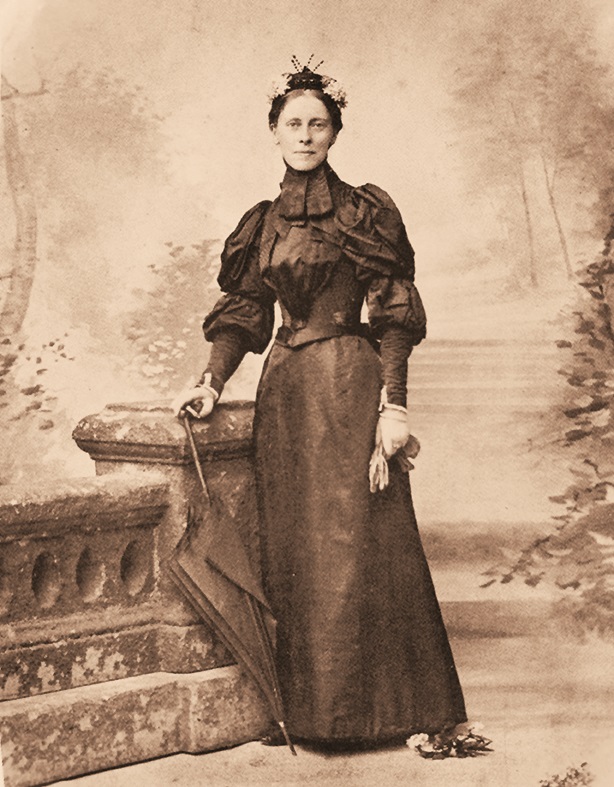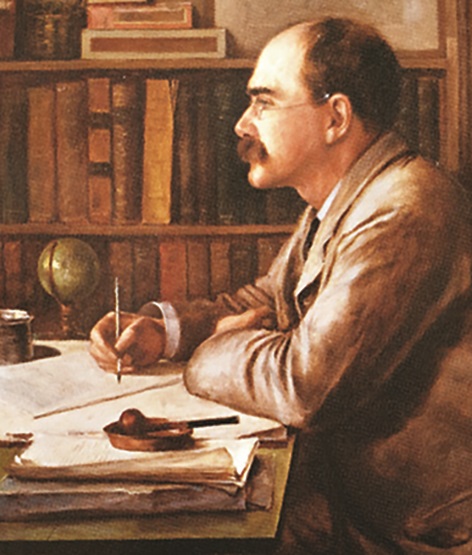
Something of Themselves: Kipling, Kingsley, Conan Doyle and the Anglo-Boer War by Sarah LeFanu, Hurst, £25 Amazon
“Anyone who has the temerity to write about Jane Austen is aware,” wrote Virginia Woolf, “... that there are twenty-five elderly gentlemen living in the neighbourhood of London who resent any slight upon her genius as if it were an insult to the chastity of their aunts.” One can rule out the possibility of the descendants of Rudyard Kipling, Arthur Conan Doyle and Mary Kingsley — the three subjects of Sarah LeFanu’s book — of being slighted by what the author digs up about their illustrious ancestors in this ambitious but compelling biographical work.
There is as much joy in it for readers as there are lessons for writers. One of the striking attributes of this work, as it traces the long and, in Kingsley’s case in particular, arduous journeys undertaken by the two men and one woman to fame and, eventually, to South Africa, is the intelligent building of the narrative’s edifice. The retellings of each of these famous lives go forward, but with crucial interregnums. For instance, the biographical arc of Kipling begins with his childhood in India and England, covers his marriage and early fame — “A Ballad of East and West” had stirred up a literary gale in 1889 — and then halts, momentarily, “in the late spring of 1897”. The strands of Kipling’s life are taken up, once again, with his meeting with Cecil Rhodes whose adventurism would kindle the flames that would turn into the Boer fire. And then, in the final segment, LeFanu lets the reader catch up with Kipling aboard the Kinfauns Castle in 1900 as he journeys towards the dénouement, as it were — the theatre of the Boer War — in which Kipling played his own role.
The staggered narrative is deployed to stitch together the life and times of Conan Doyle and Kingsley too, and the results are astonishing. The breaks in the narrative, followed by glimpses into other lives, keep monotony at bay, with the different episodes helping in the joining of crucial dots. Among other deductions — is not the biographer also a sleuth? — LeFanu deduces that a sense of restlessness and ‘unbelonging’ may have not only facilitated the journeys of her protagonists to South Africa but also shaped their experiences there. The first section, offering glimpses of the early life of Kipling, Kingsley and Conan Doyle, is fundamental to LeFanu’s hypothesis. Did Kipling’s dual life, a raj orphan and a flag-bearer of the Empire, lead to the intensification of his antipathy towards the Establishment in South Africa? Is it not possible that Kingsley, an outcast from what she cheekily called haut politique — London’s drawing room society — chose South Africa as an instrument of redemption? Restlessness may have spurred Conan Doyle on, but LeFanu detects the element of masquerade in him as well; his country squire trappings could have been a mask to conceal an impoverished childhood with a demented father, the kind of life that would raise eyebrows in the world that he had infiltrated into with his creativity.
The rumble of the war gets louder as LeFanu’s subjects inch closer to South Africa. The brutality of the conflict is borne out by the despatches of Conan Doyle as well as by Kingsley’s moving accounts of the sufferings of the wounded in Simon’s Town. But the experience of the war is also mediated through political and ideological sieves. Kipling, significantly, was condescending of the Boer as well as of the Treaty of Vereeniging, describing the latter as a treacherous betrayal of the ideals of the Empire and its footmen.
Peace, however, did not bury war. It lived on in the creative outputs of Kipling and Conan Doyle, Kingsley having died of typhoid in Simon’s Town. LeFanu should be complimented for drawing attention to the writings of Conan Doyle on preventive medicine, public health and army reforms, works that have, unfortunately, been eclipsed by the adventures of the Man on Baker Street. Kim has achieved literary immortality, but not “The Captive”, which contains many of Kipling’s brooding ruminations on questions relevant to the War. These asymmetries in the literary legacies of Conan Doyle and Kipling are revealing.

Arthur Conan Doyle Scanned from the book
But can biographies, even one as magisterial as this one, answer every query on the lives under scrutiny? LeFanu’s thoughts on “If...” — Kipling’s poem that was voted as Britain’s most popular poem in a BBC poll in the centenary year of the Boer War — are instructive in this context. “If...” does not rest conveniently with Kipling’s otherwise indisputably imperial leanings. There are then dark recesses in luminous minds that defy the biographer’s searching light.

Mary Kingsley Scanned from the book

Rudyard Kipling Scanned from the book
The three protagonists are the beating heart of this book. But it is in the fleshing out of Kingsley’s character that LeFanu reveals the challenges of biography-writing most explicitly. LeFanu empathizes with Kingsley’s battles with numerous adversities in the course of her short, candescent life: the burden of being the dutiful daughter, the prejudices of Victorian England that remain untouched by modernity — why else does she remain lesser known than Kipling and Conan Doyle even though her ethnographic works arguably rival the literary accomplishments of her two male peers? But that does not stop LeFanu from revealing grey, conflicting specks. “As an old-fashioned free-trade imperialist Mary Kingsley believed in the right of the English to take, to colonise and to profit thereby, but she had no truck with what she saw as the cant of improvement of other races...” The text is enlivened further by the cameo appearances of contemporaries. Cor van Gogh, the youngest of the van Gogh siblings, is captured by the British and dies in a field hospital; M.K. Gandhi leads the corps of “body-snatchers” — Indian stretcher-bearers — at Colenso, only to be denied rightful recognition for such heroism.










